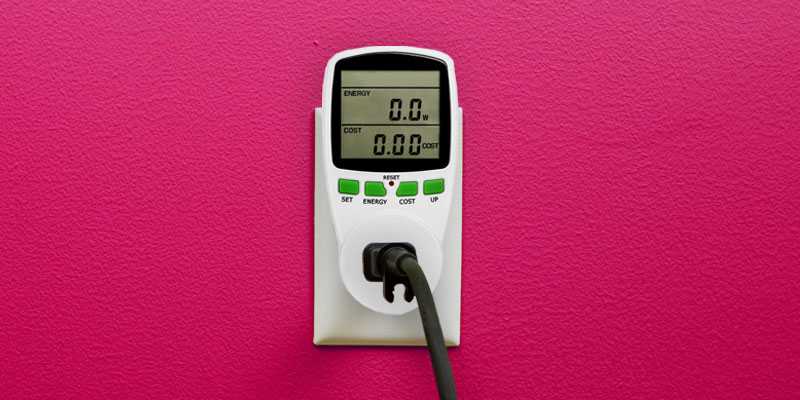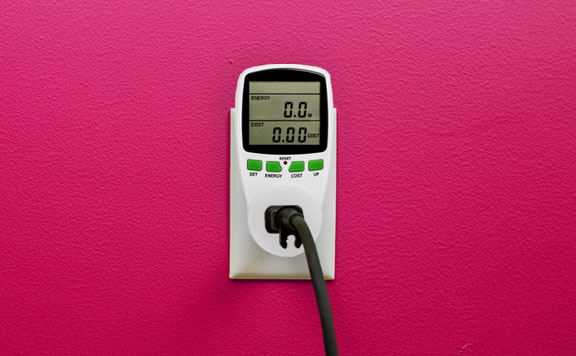
Get your 2 highest-use days a week FREE + $200 in bonus bill credits for extra savings.

Straightfoward plan with a locked-in energy charge.

Designed exclusively for smaller spaces.
Pricing Details
Early cancellation fee
Pricing Details
Early cancellation fee
Texas electricity pricing includes charges from Reliant and delivery charges from your TDSP/utility (CenterPoint Energy). The combined charges below divided by your total monthly usage equals your average price per kWh.
1 The total amounts assessed by a Transmission Distribution Service Provider (TDSP) for the delivery of electricity to a customer over poles, wires and other TDSP facilities, not including discretionary charges.
Maximize your energy savings with electricity usage monitors
Discover how electricity usage monitors can help you save on energy bills and reduce your carbon footprint. Learn the best practices for monitoring and managing your home's energy use.



Maximize your energy savings with electricity usage monitors
Discover how electricity usage monitors can help you save on energy bills and reduce your carbon footprint. Learn the best practices for monitoring and managing your home's energy use.
Home energy monitors are devices that help you track and manage your electricity usage. These devices provide real-time data on how much power your appliances and devices consume, helping you make smarter energy choices. By understanding your usage, you can lower your utility bills and reduce your environmental impact—without sacrificing comfort.
Power monitoring devices connect to your home’s electrical panel or individual outlets. They measure the flow of electricity and deliver detailed insights into your consumption patterns. Some advanced models even offer personalized tips to help you optimize your energy use and avoid waste.
With a home energy monitor, you can uncover valuable insights like:
• Which appliances use the most electricity
• When your energy usage peaks during the day
• Where you can make small changes that lead to big savings
For example, you might discover that your second refrigerator is quietly driving up your bill—or that your energy use spikes every evening when multiple devices are running at once.
Follow these steps to start monitoring your electricity usage at home:
1. Install a home energy monitor: Choose a model that fits your needs, and follow the manufacturer’s instructions.
2. Connect to your smart home system: Integrate the monitor with your existing smart devices for seamless control.
3. Analyze the data: Use the insights to identify high-usage appliances, and adjust your habits to save energy and money.
At Reliant, we’ve got plenty of tips and know-how that can help you boost energy efficiency when choosing and using your appliances. Check out our deep dive into washers and dryers, dishwashers, water heaters, conventional refrigerators and more.
Some energy providers and utilities offer free energy monitors as part of energy efficiency programs. These typically provide basic tracking features. Paid monitors, on the other hand, often include:
• Appliance-level tracking
• Mobile app integration
• Real-time alerts and recommendations
Check with your provider to see what’s available, and choose the option that best fits your lifestyle and goals. You can also find these at online retailers and home improvement stores.
Smart meters are a key part of modern home automation. They deliver real-time data on your energy use, which can be used to automate tasks like adjusting your thermostat or dimming lights based on your consumption patterns. It’s a smarter, more efficient way to manage your home. You can enroll your smart thermostat in eligible energy management programs to help automate energy savings. In Texas, you can leverage the Smart Meter Texas website to get daily, monthly and 15-minute interval energy data regarding your usage. You can also find this information in your online account or mobile app for your electricity service.
Smart thermostats, lights and appliances can work with energy monitors to give you real-time control. You can make instant adjustments to reduce energy use—whether you're home or away. Imagine getting a notification when your usage spikes and being able to respond immediately from your phone.
Setting up a plug-in monitor is straightforward:
Monitoring and managing your home’s energy consumption is a crucial step towards achieving greater efficiency and potentially reducing utility costs. By leveraging advanced energy monitors and integrating them with smart home systems, you can gain valuable insights into your energy usage, optimize your consumption, and contribute to a more sustainable lifestyle.
Reliant offers a variety of tools and services designed to help you take control of your energy use, making it easier than ever to enhance your home’s efficiency. You can even track your usage from anywhere with the award-winning Reliant app. Explore our solutions today, and start your journey towards smarter, more efficient energy management.
What is a home energy monitor?
A home energy monitor is a device that tracks your electricity usage in real time. It helps you understand how much energy your appliances and devices use so you can make informed decisions to reduce consumption and save money.
How accurate are energy monitors?
Most modern energy monitors are highly accurate, especially those that connect directly to your electrical panel. Accuracy can vary by model, so it’s important to choose a reputable brand and follow installation instructions carefully.
Do I need a smart home system to use an energy monitor?
No, you don’t need a full smart home setup to use an energy monitor. Many plug-in models work independently. However, integrating your monitor with a smart home system can unlock additional features, like automation and remote control.
Can energy monitors help lower my electricity bill?
Yes. By identifying high-usage appliances and peak usage times, energy monitors empower you to make changes that can lead to lower electricity bills over time.
Are there any free energy monitors available?
Some utility companies offer free energy monitors as part of energy efficiency programs. Check with your provider to see if you qualify.
What’s the difference between a plug-in monitor and a whole-home monitor?
Plug-in monitors track the energy use of individual appliances, while whole-home monitors connect to your electrical panel and provide a comprehensive view of your entire home’s energy usage.

Ready to find your Reliant electricity plan?
Related articles
Select a category from the dropdown menu.